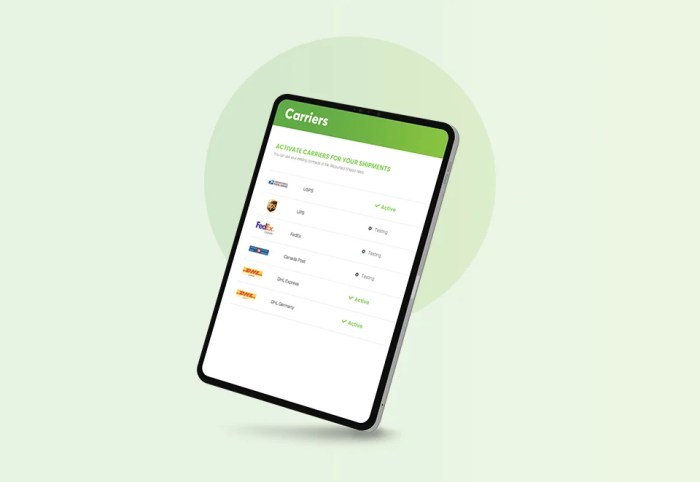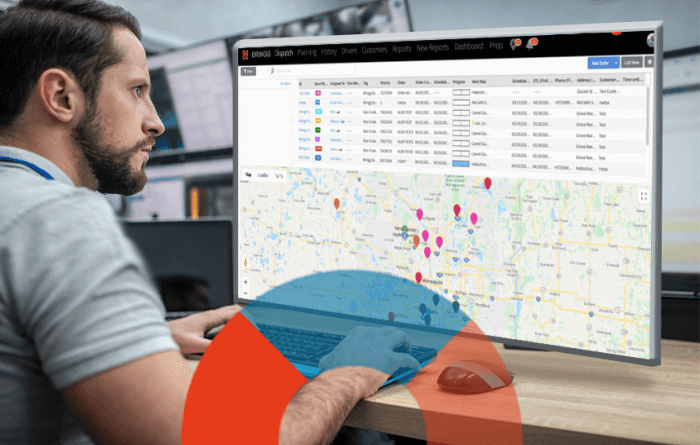Shipping and logistics software is revolutionizing the way businesses manage their supply chains. It automates tasks, optimizes routes, and provides real-time visibility into shipments, ultimately improving efficiency and reducing costs. This software is crucial for companies of all sizes, from small startups to large corporations, allowing them to focus on core business functions rather than getting bogged down in administrative details.

Source: elasticserve.com
This software offers a range of features, including order processing, warehouse management, and transportation optimization. By integrating these tools, businesses can improve their overall logistics performance. The ability to track shipments in real-time provides valuable insights into potential delays and allows for proactive adjustments to maintain on-time delivery.
In today’s fast-paced global economy, efficient shipping and logistics are crucial for businesses of all sizes. From small startups to large enterprises, managing the complexities of transportation, warehousing, and order fulfillment can be daunting. This comprehensive guide explores the world of shipping and logistics software, detailing its benefits, key features, and how it can revolutionize your supply chain.
Understanding the Need for Shipping and Logistics Software
Traditional methods of managing shipping and logistics often involve cumbersome spreadsheets, manual processes, and disparate systems. This leads to errors, delays, and inefficiencies. Shipping and logistics software, on the other hand, offers a centralized platform to manage all aspects of your supply chain, from order placement to delivery confirmation. This software automates tasks, tracks shipments in real-time, and provides valuable insights into performance, enabling businesses to optimize their operations and reduce costs.
Key Benefits of Using Shipping and Logistics Software
- Improved Accuracy and Efficiency: Automation minimizes manual data entry, reducing errors and streamlining processes.
- Real-Time Tracking and Visibility: Monitor shipments at every stage, keeping you informed of their location and expected delivery time.
- Reduced Operational Costs: Optimize routes, negotiate better rates with carriers, and identify areas for cost reduction.
- Enhanced Customer Satisfaction: Provide accurate delivery information and proactive communication to build trust and loyalty.
- Data-Driven Decision Making: Analyze performance metrics to identify trends, improve strategies, and make informed decisions.
Key Features of Shipping and Logistics Software
Modern shipping and logistics software solutions are packed with features designed to enhance every aspect of the supply chain. These include:
Order Management
- Order processing and fulfillment: Streamlined order entry, picking, packing, and shipping.
- Inventory management: Real-time tracking of inventory levels across locations.
- Order tracking and management: Provide customers with accurate and up-to-date shipment information.
Warehouse Management
- Warehouse layout optimization: Efficiently manage storage space and optimize picking routes.
- Picking, packing, and shipping automation: Reduce manual errors and improve throughput.
- Receiving and putaway optimization: Streamline the process of receiving and storing goods.
Transportation Management, Shipping and logistics software
- Carrier selection and negotiation: Compare rates and choose the most cost-effective carriers.
- Route optimization: Plan efficient delivery routes to minimize costs and delivery times.
- Shipment tracking and tracing: Provide real-time tracking information to customers and stakeholders.
Reporting and Analytics
- Performance reporting: Generate detailed reports on key metrics like delivery times, costs, and customer satisfaction.
- Data visualization: Present data in an easily digestible format to aid in decision-making.
- Predictive analytics: Identify potential issues and optimize operations proactively.
Choosing the Right Shipping and Logistics Software
Selecting the appropriate software requires careful consideration of your specific needs and business goals. Factors to consider include scalability, integration capabilities, pricing models, and the level of support provided. Consider your current systems, future growth projections, and the size of your operations when making your choice. A well-chosen software solution will pay dividends by streamlining your processes and improving your overall supply chain management.

Source: bringg.com
Frequently Asked Questions (FAQ)
- How much does shipping and logistics software cost?
- Pricing varies significantly depending on the features, functionality, and vendor. Contact vendors for personalized quotes.
- Can this software integrate with my existing systems?
- Most modern solutions offer APIs and integrations with popular ERP, CRM, and other business applications.
- What are the security measures in place for sensitive data?
- Reputable vendors implement robust security measures to protect your data.
- How can I get started with shipping and logistics software?
- Evaluate your needs, research solutions, request demos, and choose a vendor that aligns with your budget and goals.
Conclusion
Shipping and logistics software empowers businesses to optimize their supply chains, improve efficiency, and enhance customer satisfaction. By automating tasks, providing real-time visibility, and enabling data-driven decision-making, this software is a powerful tool for success in today’s competitive market. Invest in the right solution to unlock the full potential of your supply chain.

Source: container-xchange.com
Source References:
- [Insert Link to a reputable logistics industry research report or article]
- [Insert Link to a reputable shipping software vendor website]
Call to Action (CTA): Ready to transform your shipping and logistics? Explore our range of solutions and request a demo today!
In conclusion, shipping and logistics software is essential for modern businesses seeking to enhance their supply chain management. By leveraging the power of automation and data analytics, companies can achieve greater efficiency, reduced costs, and improved customer satisfaction. The future of logistics is undeniably tied to the effective use of these sophisticated tools.
Detailed FAQs
What are the different types of shipping and logistics software available?
Various software solutions cater to different needs. Some are cloud-based, offering flexibility and scalability, while others are on-premise solutions. Features also vary, from basic order management to complex warehouse automation. Consider factors like company size, industry, and specific requirements when choosing.
How much does shipping and logistics software typically cost?
Pricing depends on several factors, including the software’s features, the number of users, and the chosen deployment model. It’s best to contact vendors for detailed pricing information and tailored quotes.
Can shipping and logistics software integrate with other business systems?
Yes, many shipping and logistics software solutions integrate with enterprise resource planning (ERP) systems, customer relationship management (CRM) systems, and other crucial business applications. This integration streamlines data flow and provides a holistic view of operations.